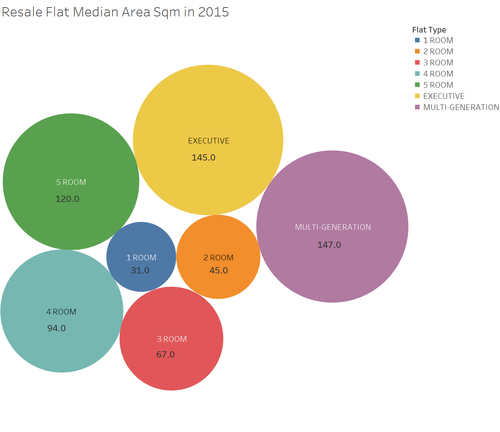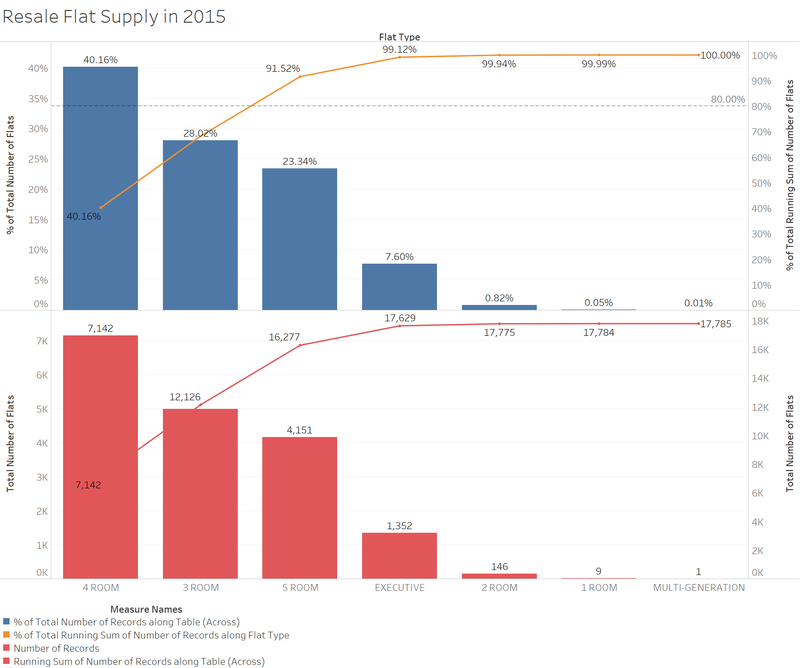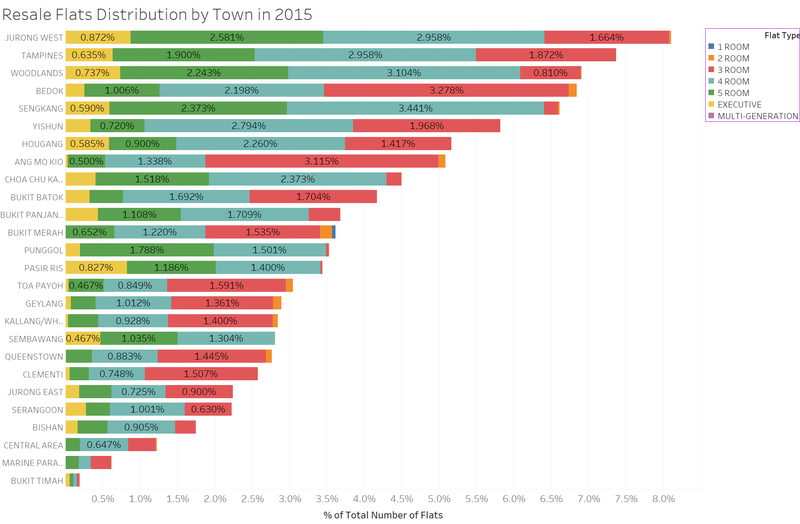ISSS608 2016-17 T1 Assign1 Chen Yi Fan
Contents
Abstract
Singapore is well-known by its success public housing policy which has made impressive progress to change Singapore from “one of world’s worst slums – ‘a disgrace to a civilised community’” commented by British Housing Committee Report in 1947, to a country that more than 80% of population live in HDB (Housing and Development Board) flats, with 95% of them owning their HDB flat[1] .
Problem and Motivation
House is one of the essential requirements for everyone. In Singapore, the resale HDB flat, as readily available and wider selection options, plays an important role in the housing market especially for the families who want to settle down in a relative short time frame at an affordable price compared to the cost of the private houses.
Through this exercise, we would like to find out what are the overview of the resale flats market in Singapore in 2015 as well as compared to year 2016. For a house buyer, the first few questions might come up are:
- What are the houses available in the market?
- 1) What are the house sizes available?
- 2) In which areas I should look for?
- 3) When was the flat built?
- 4) How big is the flat do I want to buy?
- What are the prices of the houses?
- 1)What is the current trend of resale flats price compared to the past years?
- 2)Which areas’ house prices are more affordable?
- 3)How does the floor level affect the house prices?
- How do the above factors reflect in this year (2016) as compared to last year?
And so on, however, we focus mainly on the most pertinent questions as following:
- Number of flats supplied vs type of the flats;
- Number of flats supplied vs their locations;
- Number of flats supplied vs their age;
- Number of flats supplied vs their sizes;
- The price of flats vs their year of sale;
- The price of flats vs their locations;
- The price of flats vs their floor level;
The answers of above questions play a critical role for buyers to decide their final purchase of a resale flat quickly and precisely, in order to suit for their diverse needs. In this article, we will give advice to a specified group of people who migrated to Singapore as professionals and are lucky enough to obtain their PR status in the past 2 years.
Approaches
To help these new migrations to answer the question of what are the houses available in the market and what are the house sizes available, we will use the data downloaded from data.gov.sg to give an insights to the resale flat market in Singapore.
Trend Analysis on Number of flats
Number of flats supplied vs type of the flats
From the Pareto chart shown below, we can observe that among all the7 types of the resales flats in year 2015, namely 1 to 5 Rooms, Executive and Multi-generation flats, 3 to 5-Room flats contribute 91.52% to the total resale flat market. Especially 4-Room flats with the total number of 7,142 out of all 17,785 units dominant majority portion of the resale market at 40.16%. It followed by 3-Room and 5-Room flats with 28.02% and 23.34% shares respectively.
Pareto graph is used here since it is able to clearly display the distribution for each of the resale flats type. With the running total, it’s obvious to get the percentage for each of the flat type in the entire market. Meanwhile the 2 staked charts showing in blue and red colour display the running total by percentage and number of count.
Number of flats supplied vs their locations
Next, after we understand the flat types available in the market, where are these flats located?
Overall we can conclude that Jurong West provides most of the resale flats (8.102%) in year 2015, whereas Bukit Timah is hardly to find resale flats (0.191%).
Stacked bar chart is used here to better differentiate flat types as well as gives the overall picture of the contribution from each residence area.
Number of flats supplied vs their age
Another important aspect we will be looking at is how old is the flat.
From the box plot chart shown below, we can see Queenstown has a wide range age of the flats and relative older flats with the median age at 40 years. Marine Parade also has the same median age flat of 40 years but it is concentrate at this range. On the contrary, Punggol, as one of the new towns, has the flats of median age at 11 years by the year of 2015.
To derive the age of the house, a calculated field is created to find the difference from the flat’s lease commence date till 2015.

Number of flats supplied vs their sizes
Another important question a buyer might want to ask is how big of the flat he/she is looking for?
To avoid any possible skewness introduced by outliers to affect the floor size of the flats, we use the average median value for each of the flat type. They are shown in the bubble chart below.

It is clearly indicated multi-generation is the largest flat with median floor size of 147 m2 and 1-Room is the smallest flat with median floor size of 31 m2.
The bubble chart is appropriate in this case since there is only one metric to measure, floor area in square meter, by each of the flat type. The colours distinguish each type clearly.
Tools Utilised


